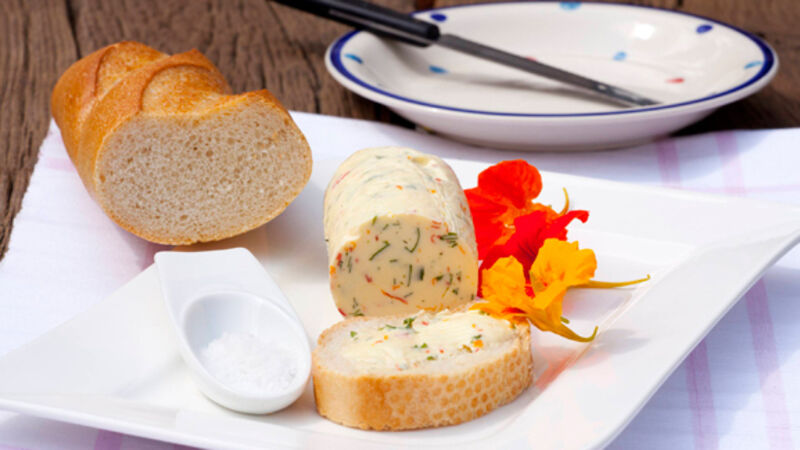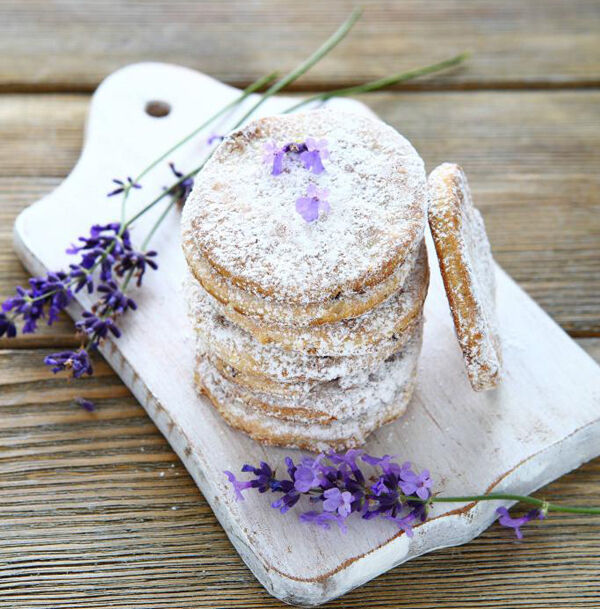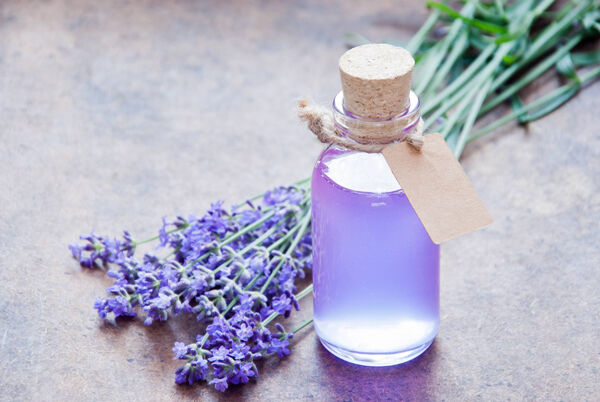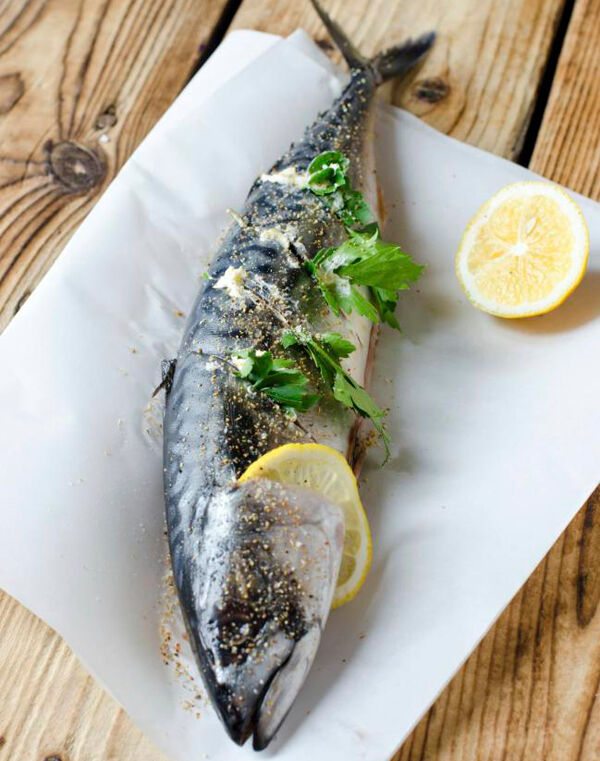Here's a few ways to have fun with edible flowers

Edible flowers and of course fresh herbs are an integral part of our simple cooking style.
I hadn’t realised what a wide variety we use until recently when I started to compile a list in response to several requests.
What started a couple of decades ago with just a few nasturtium flowers scattered over a potato salad has now grown into a long list that keeps being added to.
Scattering gaily coloured flowers over our food to garnish and enhance the flavour may seem like a thoroughly modern trend but in fact using flowers in the kitchen can be traced back to the Roman era and was also part of Chinese, Middle Eastern and Indian cultures.
In Victorian times, flower petals were considered particularly cutting edge.
In recent years many innovative chefs and home cooks have been having fun adding extra colour and a touch of elegance to their dishes.
It’s not just about appearance though; many flowers have considerable nutritional and medicinal value.
As well as the nasturtiums, which are high in antioxidants, marigold petals (calendula), cornflowers, thyme, chives, wild garlic, society garlic and all the herb flowers are edible.
We particularly love dill and fennel flowers with their liquorice and aniseed flavour are especially good for fish dishes.
They add a delicious extra burst of excitement to a salad and make a pretty garnish. Lavender is not just for lavender bags and pot pourri.
We love the buds in ice creams, syrups and even added to scones. Squash, pumpkin and zucchini are irresistible dipped in a tempura batter and fried until crisp.
There are lots of ways to have fun with flowers apart from just scattering them into salads.
Add one or several to butters, alone or in combination with fresh herbs to serve with vegetables, meat or fish. Use to flavour teas, punches or vinegars.
Infuse in oils and syrups. Sprinkle over pasta or pancakes, add to soups and sandwiches.
Use to decorate cakes and even buns and of course larger flowers can be stuffed and eaten raw or cooked.
Fragrant rose petals impart a wonderful scent to a cake when used to line the tin and of course it’s fun to pop edible flowers into the ice cubes to perk up lemonade and punches – just use your imagination and a measure of restraint...
And of course flower petals are wonderful used as an alternative to confetti at weddings.
Before I whip up any more enthusiasm, a few cautionary words. Not all flowers are edible although I keep discovering new ones to add to my list so don‘t take risks until you are absolutely sure.
Avoid flowers that have been sprayed with pesticides or other chemicals.
Few, if any florists flowers are organic so harvest from your own flower bed or window sill.
Avoid flowers picked along the edge of a busy road where exhaust fumes and residues collect on plants.
Don’t OTT on flowers, an overdose could cause digestive problems.
Alyssum flowers, Angelica, Anise hyssop, Apple blossom, Begonias, Borage, Calendula, California Poppies, Camomile, Carnations, Cauliflower blooms, Chives, Chrysanthemums, Clary sage, Clover, both white and red blossoms, Cornflowers, Cowslips, Daisy, Dandelions, Daisies, Day Lilies, Dianthus,Dill flowers, Elderflowers, Evening primrose, Fennel, Forget-me-nots. Freezias, Fuschia, Gladolia, Golden rod, Hibiscus, Hollyhock, Honeysuckle, Hyssop impatiens, Jasmine, Johnny jump ups, Lemon flowers, Lilac, Meadowsweet, Orange flowers, Pea flowers not sweet pea, Pansy, Peony, Poppy (corn or Flanders Poppy), Phlox, Primroses, Roses, Snap Dragons, Sunflower, Sweet Woodruff, Scented Geraniums, Scarlet runner bean, Sweet Cecily, Thyme flowers, Tulip flower, not bulbs, Violets, Violas, Yarrow, Zucchini.
For some reason it has become a tradition in Kinoith to always have shortbread in the Aga!

Many years ago when I was attempting to hide the shortbread from the children who seemed to devour it as fast as it was made, I discovered quite by accident that it keeps beautifully for days in the coolest oven of our four door Aga.
Now not only the children but all our friends know where to look!
- 350g plain white flour
- 300g butter
- 110g castor sugar
- 75g ground rice
- good pinch of salt
- good pinch of baking powder
- 2-3 tablespoons dried lavender (unopened lavender flowers)
- vanilla or castor sugar for sprinkling
Swiss roll tin 25 x 38cm
Sieve the dry ingredients into a bowl. Add the dried lavender.
Cut the butter into cubes and rub in until the whole mixture comes together (alternatively whizz everything together in the food processor).
Spread evenly into the tin, roll flat.
Bake for 1 - 1½ hours in a low oven, 140-150C/Gas Mark 1-) or bake for 20-30 minutes in a moderate oven 180C/Gas mark 4.
It should be pale golden but fully cooked through.
Cut into squares or fingers while still hot. Sprinkle with castor or vanilla sugar and allow to cool in the tin.
Delicious over ice-cream or labneh, or as a base for a sparkly aperitif, also good in cakes or over sliced peaches or nectarines in summer.

- Lavender flowers gathered just before they open — use 2 heaped tbsp 600ml water
- 400- 450g sugar
- Very thin strips lemon peel from 1 unwaxed lemon
Put the cold water, sugar and lavender flowers into a saucepan, add a couple of very thin strips of lemon peel.
Warm slowly on a medium heat, when the sugar is dissolved, bring to the boil for 5-6 minutes.
Turn off the heat and allow to infuse for about 30 minutes.
Strain through a fine sieve.
Pour into sterilized bottles, cover and store in a cool dry place or in the fridge if you have space.
Keeps for 3 months.

- 8 fillets of very fresh mackerel (allow 170g fish for main course, 85g for a starter)
- Seasoned flour
- Small knob of butter
- Nasturtium Butter
- 55g butter
- 2 teaspoons finely chopped parsley
- Nasturtium leaves and lots of nasturtium flowers
- Juice of ½ small lemon
- Nasturtium flowers and little leaves
- Segment of lime
- Parsley
First make the Nasturtium butter.
Cream the butter, stir in the parsley, roughly chopped nasturtium flowers and leaves, and a few drops of lemon juice at a time.
Roll into butter pats or form into a roll and wrap in greaseproof paper or tin foil, screwing each end so that it looks like a cracker.
Refrigerate to harden.
Heat the grill pan. Dip the fish fillets in flour which has been seasoned with salt and freshly ground pepper.
Shake off the excess flour and then spread a little butter with a knife on the flesh side, as though you were buttering a slice of bread rather meanly.
When the grill is quite hot but not smoking, place the fish fillets butter side down on the grill; the fish should sizzle as soon as they touch the pan.
Turn down the heat slightly and let them cook for 4 or 5 minutes on that side before you turn them over.
Continue to cook on the other side until crisp and golden.
Serve on a hot plate with some slices of Nasturtium butter and a segment of lime.
The butter may be served directly on the fish, or if you have a pretty shell, place it at the side of the plate as a container for the butter.
Garnish with nasturtium flowers and tiny leaves, and a segment of lime.
- 175g (6oz/) soft butter
- 150g (5oz) castor sugar
- 3 eggs, preferably free range
- 175g (6oz) self-raising flour
1 x 20.5cm (8 inch) sandwich tin, buttered and floured. Line the base of the tin with parchment paper.
Preheat the oven to 180C/350F/Gas Mark 4.
Put the soft butter, castor sugar, eggs and self-raising flour into the bowl of a food processor.
Whizz for a few seconds to amalgamate and turn into the prepared tin – make a dip in the centre so it rises evenly.
Bake in the preheated oven for 25-30 minutes approx. or until golden brown and well risen.
Cool in the tin for a few minutes, remove and cool on a wire rack.
The marigold petals flavour and colour in shortbread in a most appealing way.
- 175g white flour or Spelt
- 110g butter
- 40g castor sugar
- 2 tbsp of marigold (calendula) petals
Put the flour, sugar and marigold petals into a bowl, rub in the butter as for shortcrust pastry.
Gather the mixture together and knead lightly. Roll out to 7mm thick. Cut into rounds with a 6cm cutter or into heart shapes.
Bake in a moderate oven 180°C/Gas Mark 4 to pale brown, 8-15 minutes, depending on the thickness of the biscuits. Remove and cool on a rack.
Serve with fruit fools, compotes and ice creams and sprinkle fresh marigold petals over the top.
Note: Watch these biscuits really carefully in the oven. Because of the high sugar content they burn easily. They should be a pale golden - darker will be more bitter.
However if they are too pale they will be undercooked and doughy. Cool on a wire rack.
I just love all the energetic young people at the Fumbally, all super passionate about food and determined to share their knowledge, skills and discoveries.
Check out the Autumn series of lectures and works shop at www.thefumballystables.ie
Treat yourself to brunch tomorrow with delicious pastries and bread produced in the Glebe bakery while you relax in the tranquility of Glebe Gardens.
Booking essential: 028-20579
From Sunday, September 18 - Friday, September 23, Carmel Somers will teach a five and a half day demonstration and practical course. You will learn a whole repertoire of starters, main courses and puddings.
Not to mention all those little extras that impress people; things like delicious home baked bread, home-made mayonnaise and great cakes, all in five and a half days.
The class covers basic techniques that can then be readily adapted. For instance, how to sweat, sauté, pan fry, sear, make a basic soup and tart – skills which are applicable in a wide range of recipes. Essentially, you’ll come away from this course proficient and confident.
www.thegoodthingscafe.com
Tel: 028-51948
The Irish Snail Farm in Co Carlow provides Irish grown snails and caviar for both restaurants and people who love Escargots. Snails are high in protein, low in fat and full of flavour. Eat them with lots of garlic butter.
www.irishsnailfarm.ie












